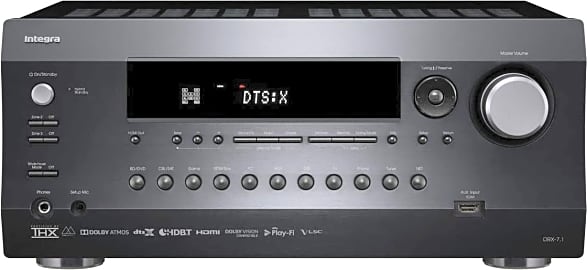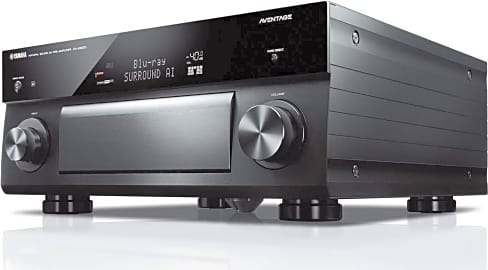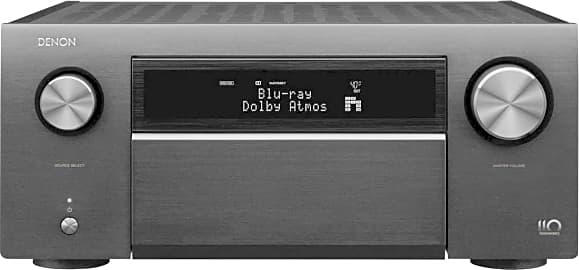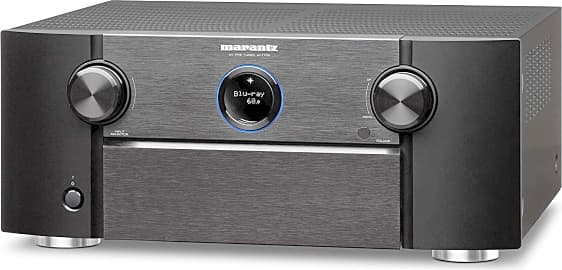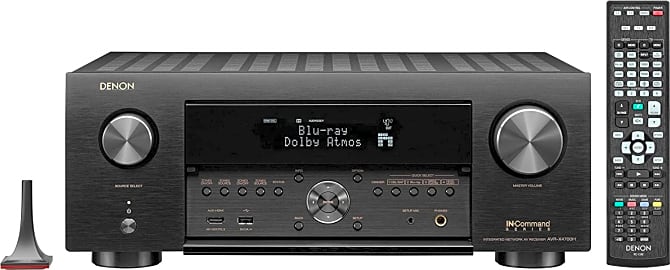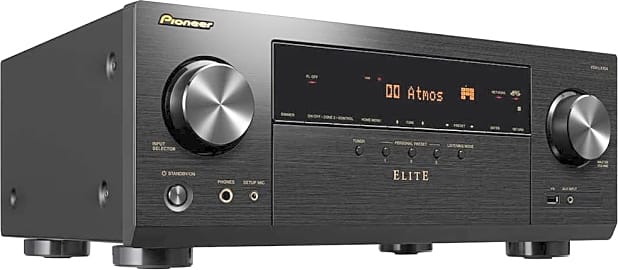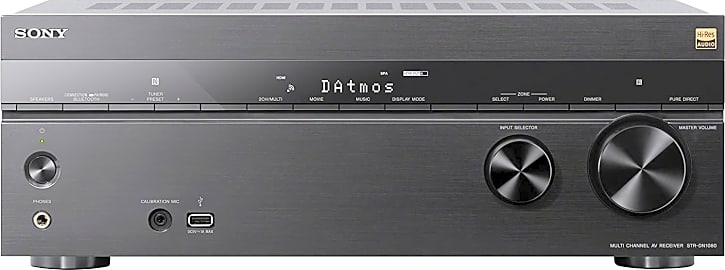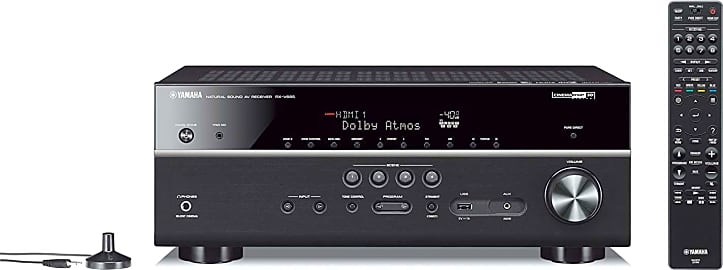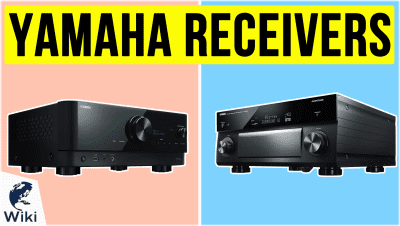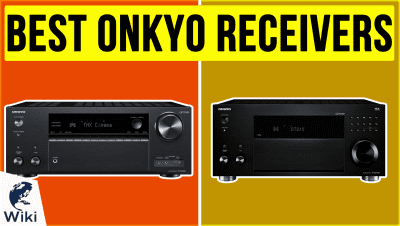The 10 Best Receivers

This wiki has been updated 44 times since it was first published in March of 2015. Looking to amp up your home theater experience? Take your movies to a whole new level with something from our selection of receivers that boast all kinds of cool functions, including surround sound, Bluetooth connectivity, internet radio playback, and, of course, outstanding audio performance. We've ranked them here by their sound quality, power, channel configurations, and extra features. When users buy our independently chosen editorial picks, we may earn commissions to help fund the Wiki.
Editor's Notes
November 10, 2020:
The big advancement in AV receivers since our last visit to the ranking has been multiple brands' realization that they need to start preparing for the eventual 8K revolution. While there are precious few ways to even shoot video in 8K, let alone display it properly, savvy consumers interested in future proofing would do well to consider models like the Denon AVR-X6700H or the Marantz AV SR5015. It is important to note that most of the 8K-capable receivers out there only offer a single 8K HDMI input and output, so once you have a streaming box, cable box, and game system that can all put out 8K, you'll want to upgrade, but that's a long ways out.
For media nuts on a budget, we included the Yamaha RX-V685 from our previous ranking and upgraded the Sony we'd had to the Sony STR-DN1080. As a result, we don't have a single 5.1 receiver on this list, but the advances in features and sound quality when you start going up in channel number lost them a shot to be included. Fortunately, we do have a 5.1 receivers list already.
Keep an eye out for how your speakers will be connected, as well. Some units, like the Yamaha Aventage CX-A5200, utilize XLR cables, which are certainly a little more unwieldy than regular speaker wire, but that have the advantage of a reverse signal pathway that cuts down on noise and lets you maintain fidelity over a greater distance. Others have wireless capabilities with their company's surround sound satellites.
May 22, 2019:
Compared to our last ranking, 100 percent of our previous selections have been replaced, as each of the brands we included last time around have seen upgrades. In some cases those upgrades are less obvious than in others. The Onkyo RZ810, for example has been replaced with the 830, and the newer version has a slightly different balance in its watts per channel depending on the speakers you employ, and it now can be used as a hub for a household Sonos system. Other than that there aren't a lot of changes. The differences between the Yamaha 683 and 685 are similarly minimal. Conversely, the Yamaha 1080 has added support for an additional subwoofer to enhance the bass in your home theater, and they've interestingly taken away an HDMI input, presumably out of respect for the fact that cord cutters are consolidating the number of input devices they use.
The Heart Of Your Entertainment
Your receiver takes that incoming signal and amplifies it and redirects it out through a surround system that you've hopefully set up.
When I was in school in Virginia, my dad let me use his beat up old 1991 Honda Civic hatchback to get around. It was a great car, despite appearances. The big problem with it, though, was the engine. White smoke intermittently spewed out the tailpipe, the engine massively overheating.
You see, your audio receiver is a lot like the engine of your theater or sound system. That makes whatever input device you use – be it a DVD, CD, Blu-Ray, TV box, Roku, etc. – kind of like your gasoline.
Your receiver takes that incoming signal and amplifies it and redirects it out through a surround system that you've hopefully set up. That redirection can split the incoming audio signals into a few different sound maps, in part based on the data coming into the receiver from the source.
If a video game, for example, is designed with Dolby 6.1 surround, you could actually hear the sound of an enemy sneaking up behind you in the center rear speaker, so it actually sounds like they're behind you. That's because 6.1 translates to a seven speaker setup: center, center-right, and center-left are all in front of you; right and left are literally beside you; and a rear center speaker lives centered behind you. The seventh speaker is the subwoofer indicated by the .1 in Dolby-speak.
If the audio input doesn't support that kind of mapping (maybe it's an old DVD with only 5.1 data available), you'll still hear audio coming out of all speakers including the rear, but it won't create that three-dimensional environment as realistically.
Surround Yourself With Quality
We spoke for a moment there about surround sound, and, among audio receivers, the availability of different surround formats is crucial to your selection. There's a caveat here, however, as it isn't quite as simple as just spending more money to get more quality.
DTS uses a much higher bit rate in their compression algorithm, which dedicates a lot more data space to the dynamic range and channel discretion of your audio.
If Dolby is the only name that comes to mind when you think of surround sound, you're missing out on a format that actually has better specs across the board than the king of the hill does. I'm talking about Digital Theater Systems, or DTS. DTS uses a much higher bit rate in their compression algorithm, which dedicates a lot more data space to the dynamic range and channel discretion of your audio.
Think of the bit rate of a given audio signal as its room to breathe. If an audio signal were a puppy and you wanted to transport it in an airplane, you'd want to put it in as big a cage as you were allowed to bring on board, wouldn't you? Well, DTS offers a cage for your puppy roughly three and a half times the size of the cage that Dolby offers, so your audio signal has more room to stretch out and display its nuances, to show off lower lows and higher highs, and to place specific sounds around the room with more precision.
Now, it's safe to say that most audio receivers on the market support DTS, though some are built with DTS in mind over Dolby, and these receivers will work more fluidly with the data. The issue that arises here is that there's not as much DTS source audio available, so even if you spend the extra cash on the best hardware and software combination to make the most out of your DTS experience, that experience might not even be available to you.
In my opinion, it's better to have a receiver with the best DTS and Dolby platform options, so that you can get the most out of whichever format you have in hand.
War Begets Audio
It was primarily US soldiers returning from the battles of WWII who began the audio revolution. A number of fighting men learned electronics and radio operations in the war, and many others took advantage of the GI bill to get themselves a legitimate education in the field. A lot of the audio innovations through the 1940s, 50s, and 60s, came at the hands of these vets.
One of these pieces, the centerpiece, actually, of these systems, was the audio receiver.
Spurned on by the musical revolutions occurring from the birth of rock through to the musical rebellion fueled by the war in Vietnam, a new generation of music lovers began demanding more from their listening experience by the mid to late 1960s. Here you see the advent of the stereo store. Where previously, radio stores sold parts for their tinkering hobbyist customers, now you had customers coming in and demanding systems outfitted with certain technologies.
One of these pieces, the centerpiece, actually, of these systems, was the audio receiver. These were analogue amplification devices that usually fed only two speakers or a set of headphones, and the sound quality was greatly determined by the quality of the wiring, all the way up to the arrival of digital audio on the consumer stage in the 1980s.
Fortunately, that audio advancement didn't require a war to gain momentum, though the battle between Dolby and DTS is pretty close.



